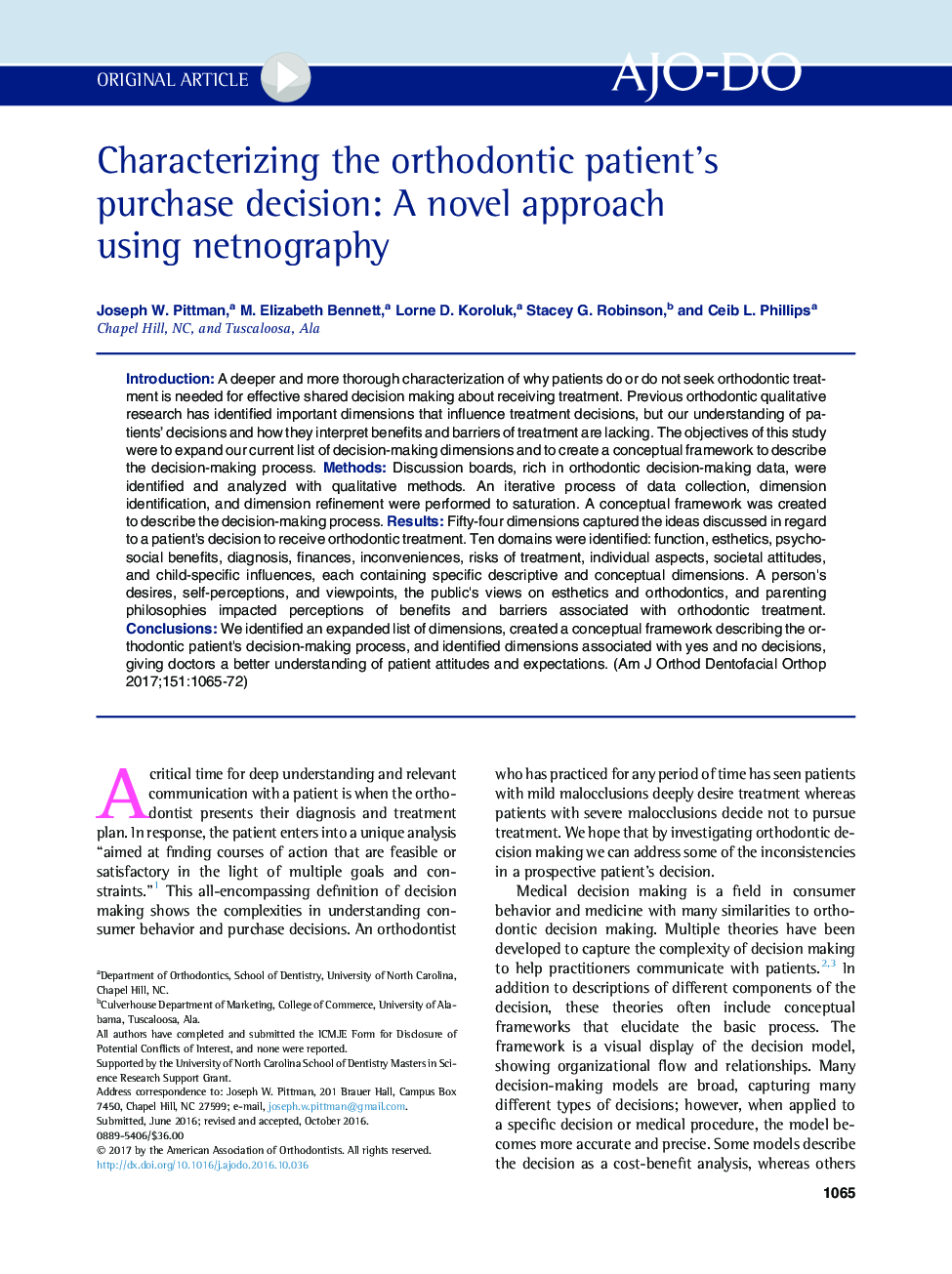| Article ID | Journal | Published Year | Pages | File Type |
|---|---|---|---|---|
| 5637606 | American Journal of Orthodontics and Dentofacial Orthopedics | 2017 | 8 Pages |
â¢Netnography provides unobtrusive and rich data for qualitative analysis.â¢New factors were identified to more thoroughly characterize patient decision making.â¢A conceptual framework was created to describe the decision-making process.â¢Internal and societal influences impact perceptions of benefits and barriers.
IntroductionA deeper and more thorough characterization of why patients do or do not seek orthodontic treatment is needed for effective shared decision making about receiving treatment. Previous orthodontic qualitative research has identified important dimensions that influence treatment decisions, but our understanding of patients' decisions and how they interpret benefits and barriers of treatment are lacking. The objectives of this study were to expand our current list of decision-making dimensions and to create a conceptual framework to describe the decision-making process.MethodsDiscussion boards, rich in orthodontic decision-making data, were identified and analyzed with qualitative methods. An iterative process of data collection, dimension identification, and dimension refinement were performed to saturation. A conceptual framework was created to describe the decision-making process.ResultsFifty-four dimensions captured the ideas discussed in regard to a patient's decision to receive orthodontic treatment. Ten domains were identified: function, esthetics, psychosocial benefits, diagnosis, finances, inconveniences, risks of treatment, individual aspects, societal attitudes, and child-specific influences, each containing specific descriptive and conceptual dimensions. A person's desires, self-perceptions, and viewpoints, the public's views on esthetics and orthodontics, and parenting philosophies impacted perceptions of benefits and barriers associated with orthodontic treatment.ConclusionsWe identified an expanded list of dimensions, created a conceptual framework describing the orthodontic patient's decision-making process, and identified dimensions associated with yes and no decisions, giving doctors a better understanding of patient attitudes and expectations.
